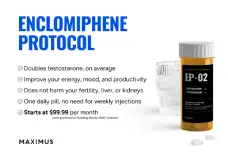some studies suggest that high levels of vitamin B12 may be associated with an increased risk of prostate cancer. S
Thanks, Vince. I did not know!
I pulled some more info from Deep Research.
In short: Yes—several well-designed observational studies (including two meta-analyses) report a
statistically significant but generally modest positive association between higher circulating vitamin B12 (cobalamin) and the subsequent diagnosis of prostate cancer. The largest pooled analysis of six prospective cohorts found only a 12 % relative increase in risk for men in the top versus bottom quintile of B12, while a much smaller Swedish study observed an adjusted three-fold increase in the highest quartile. Other large cohorts and some randomized trials have shown no association, or increases confined to advanced disease, suggesting that high B12 could be a marker of pre-clinical cancer or of underlying inflammatory or liver conditions rather than a direct cause. Overall, the evidence is mixed and not yet strong enough to prove that vitamin B12 itself promotes prostate carcinogenesis.
1. What the Meta-analyses Show
1.1 2010 systematic review and meta-analysis
A meta-analysis pooling nine prospective cohorts (≈5 000 cases) reported a 10 % higher prostate-cancer risk for every 100 pmol/L increment in circulating B12 levels (OR 1.10, 95 % CI 1.01-1.19) .
1.2 2016 individual-participant data consortium
The Endogenous Hormones, Nutritional Biomarkers and Prostate Cancer Collaborative Group combined six cohorts (6 875 cases, 8 104 controls). Men in the highest versus lowest B12 quintile had a modestly elevated risk (OR 1.12, 95 % CI 1.01-1.25) with no heterogeneity between studies . The same analysis noted stronger associations in never-smokers (OR 1.37 per 80-percentile increase) but no difference by tumour grade .
2. Evidence from Individual Cohort and Case-Control Studies
| Study (design, n) | Exposure contrast | Risk estimate |
|---|
| Northern Sweden Health & Disease Study (nested case-control, 254 cases) | Highest vs. lowest B12 quartile | OR 2.63 unadjusted; OR 2.96 multivariable |
| EPIC-Oxford phase-1 (2 141 cases) | Doubling of B12 concentration | RR 1.12 (95 % CI 0.94-1.35), but 1.69 (1.05-2.72) for advanced disease |
| Norwegian JANUS serum bank (3 000 cases) | Highest vs. lowest B12 quintile | No association overall (OR ≈ 1.0) |
| ProtecT (PSA-detected UK cohort, 1 461 cases) | Highest vs. lowest B12 quartile | OR 1.17 (0.95-1.43) |
These data illustrate that effect sizes vary substantially between cohorts—ranging from null to roughly three-fold elevations—likely reflecting differences in sample size, baseline B12 status, confounder control and cancer detection methods.
3. Trial Data and High-Dose Supplementation
- A double-blind trial of 1 mg/day folic acid (no B12) for colorectal polyp prevention unexpectedly increased prostate-cancer incidence (HR 2.47, 1.18-5.19) after 10 years PMC.
- Two Norwegian homocysteine-lowering trials that used combined folic acid + 400 µg B12 daily showed higher total cancer incidence and mortality after extended follow-up (HR 1.21, 95 % CI 1.05-1.39) JAMA Network.
- A Lancet pooled analysis of 13 000 participants found no overall cancer signal during the first 5 years of folic-acid supplementation, but prostate cancer was not separately elevated The Lancet.
Because few trials isolate vitamin B12, causal inference remains uncertain.
4. Biological Plausibility
Vitamin B12 is a cofactor in one-carbon metabolism, influencing DNA methylation and nucleotide synthesis. Hyper-methylation of tumour-suppressor genes and accelerated cell proliferation have been observed in prostate models exposed to excess methyl donors . However, high plasma B12 can also arise from liver disease, renal dysfunction, or systemic inflammation—conditions that themselves elevate cancer risk. A Danish registry study of >330 000 adults showed markedly higher short-term cancer incidence among people with B12 > 800 pmol/L (SIR 6.27) but across multiple tumour types, supporting the “reverse-causality” hypothesis that occult cancers raise circulating B12-binding proteins .
5. Limitations of the Current Evidence
- Observational design—susceptible to residual confounding and reverse causation.
- Heterogeneous assays and cut-points across studies.
- Single baseline measurement may not reflect long-term exposure.
- Few randomized trials directly test sustained high-dose B12 alone.
- Potential publication bias toward positive findings in early small studies.
6. Practical Implications
- Typical dietary or multivitamin B12 intakes (≤25 µg/day) remain well below levels linked to possible risk in observational studies.
- Clinicians should interpret very high serum B12 (≥600-700 pmol/L) cautiously and consider ruling out underlying disease rather than reflexively stopping supplements.
- Men with prostate-cancer concern should prioritize evidence-based risk modifiers—maintaining healthy weight, exercising, and moderating calcium and alcohol—while awaiting clearer guidance on B-vitamin supplementation.
Take-away
Current research
hints at a weak association between higher circulating vitamin B12 and prostate-cancer incidence, but the evidence is inconsistent and possibly confounded. One small Swedish study found a three-fold risk in the top quartile, yet the largest pooled analysis shows only a 12 % excess. Until large, long-term randomized trials address B12 specifically, it is prudent to avoid mega-dose supplements without medical need, but there is
no compelling proof that physiologic B12 intake drives prostate cancer. Continued research—especially studies that measure repeated B12 levels and distinguish aggressive from indolent tumours—will be critical to clarify this intriguing yet unsettled question.












